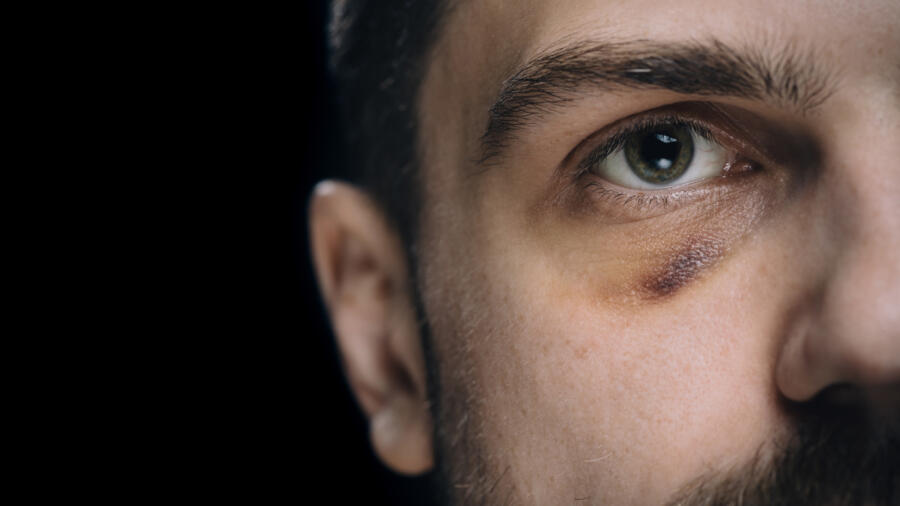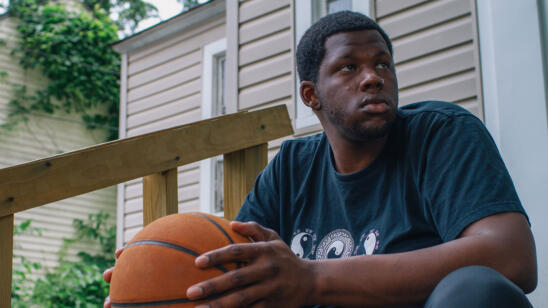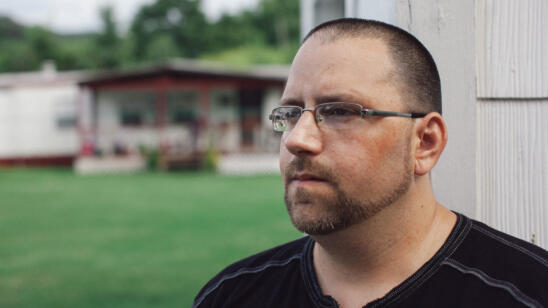On January 27, 2018, 34-year-old Bryan Lawson shot and killed his wife, Beth Lawson, in their Tennessee home, the explosively violent climax to their abusive relationship. Many would assume Bryan was the abuser, inflicting brutality against Beth. But it was actually Beth—a former National Guard service member—who regularly assaulted Bryan, who was disabled.
According to the National Coalition Against Domestic Violence, one in four women experience severe physical violence at the hands of intimate partners, compared with only one in nine men. And at the National Domestic Violence Hotline, only 13 percent of documented contacts come from male victims. But Lawson’s trial—showcased on the first episode of A&E’s Accused: Guilty or Innocent? shows that men suffer domestic violence too. And when they do, their survival is uniquely challenging.
[Stream episodes of Accused: Guilty or Innocent? in the A&E app.]
Stigma Against Reporting
One of the biggest difficulties in stemming domestic violence is the degree to which it goes underreported—regardless of the victim’s gender. Angela Lee, the program services manager at the National Domestic Violence Hotline, believes male victims are particularly disinclined to report their abuse because they fear doing so proves they’re effeminate or weak.
“Most of the time, when the call starts, they’ll say something about ‘I’m ashamed of this, I feel I shouldn’t even be talking to anyone.’ They feel like they’re not supposed to be going through it,” Lee tells A&E True Crime.
That trend of hiding victimhood and self-blaming might be contaminating broader surveys about intimate partner violence, argues Philip Cook, author of Abused Men: The Hidden Side of Domestic Violence.
“They’re embarrassed,” says Cook, adding that while “men do talk to other men,” they’re more skittish about reporting their abuse to female crisis counselors. One 1999 study he notes showed male victims of sexual violence reporting their abuse less often to female interviewers than to male ones.
It’s a Woman’s World
While women are at systemic disadvantage in many facets of public life, in the world of domestic abuse the protective measures currently in place disproportionately favor women.
In 2008, California’s Supreme Court found that abused men struggled to gain access to the state’s domestic violence shelters and programs on the basis of their gender. State agencies were ordered thereafter to boost their programs’ gender inclusiveness, but Cook says it’s unclear how much compliance there is nationally.
At the National Domestic Violence Hotline, Lee says many male callers express fear of involving police.
“They’re afraid that if they contact police, because they’re male, they’ll get arrested. That keeps them from reaching out,” says Lee.
Cook—who interviewed more than 100 abused men for his book—says that abused men with children have even more complicated situations. Many, Cook says, stay with abusive partners for fear of losing access to their children because of assumed gender bias in family court.
“They know they’re going to be reduced to every-other-weekend visitation,” says Cook. “They’re scared to death of that, and they’re scared of child-support payments. [Abused] men are quite aware of those two factors.”
Gay Male Victims Face Greater Risk
But not all male victims of domestic violence suffer at the hands of female perpetrators. Some are gay victims of domestic abuse. For them, the stigma of needing to “be a man” and not report the abuse they suffer is compounded by the fact that their male abuser is often bigger, stronger and more capable of inflicting serious bodily harm than most female abusers.
And for those gay male victims who have yet to fully come out of the closet, there’s the additional fear that a vindictive abuser will “out” them to the world if they try to leave.
Lee says that homosexual male callers often say their partners have explicitly threatened as much.
“There’s so much control involved,” Lee explained, and so “there’s a very high rate within the LGBTQ community that are vulnerable to abuse.”
Domestic Partner Violence in the Coronavirus Lockdown
Intimate partner violence is always a problem, but the National Domestic Violence Hotline says that the isolation measures temporarily enacted because of the COVID-19 pandemic could further inflame volatile relationships prone to abuse.
“Because of the lessening of social interactions, because of a lot of people not being able to work and being secluded to their homes, that may create a barrier for victims—including male victims—to being able to contact us and get the help that they need,” says Lee.
Other victims are now unable to escape. Because while the victims feel unsafe with their partners, COVID-19 means even loving family members—ones outside the abusive home—now feel unsafe with each other.
“I spoke to one male victim who had a plan to leave but became stuck. His family wasn’t there to support him. They were resistant to the plan [of him joining them] because of the virus,” explains Lee. “It’s our job to point out potential consequences [to a victim planning on leaving]. So I might say, ‘So you’re saying you want to stay with your mom—well, is she under quarantine?'”
Related Features:
The Warning Signs an Abusive Partner May Kill You
Lorena Bobbitt and Others: What Happens When Abused Women Snap


